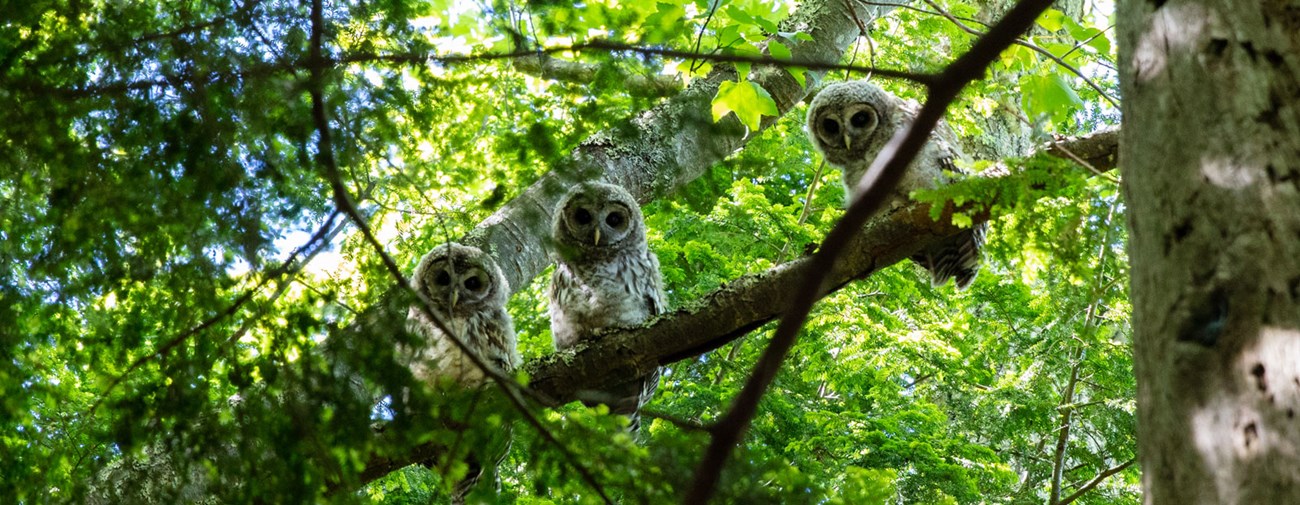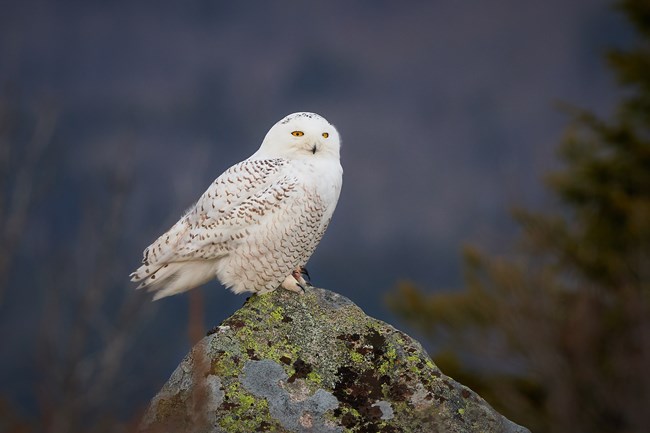
Are you afraid of the dark? As humans, sight, our strongest sense, fails us at night. To compensate for this loss, sounds feel louder, scents smell stronger, and we may feel more vulnerable. But the eyes of owls and other nocturnal wildlife are built for the night. This and other adaptations makes owls one of the most fascinating raptors to see while at Acadia. Protecting Acadia's OwlsYou can make a difference in the life of Acadia's owls and carry these valuable practices home with you.
Barred OwlsBarred owls are the most widespread owl in the eastern United States. Like many owls, they prey on rodents, reptiles and amphibians, smaller birds, and even other owls. Barred Owls roost on branches and in tree cavities during the day and hunt by night. They are territorial throughout year and need their space.Barred Owls are forest birds. They tend to occur in older forests, and they need large, dead trees for nest sites; these requirements make them sensitive to expansion of logging. For this reason, the Barred Owl is often used as an indicator species for managing old forests. Great Horned OwlThe Great Horned Owl is the most widespread owl in the United States They can be found in almost any habitat, they often are found around suburbs but gravitate toward secondary-growth woodlands, swamps, orchards, and agricultural areas, but they are found in a wide variety of deciduous, coniferous or mixed forests. 
Image courtesy of visitor Nathaniel Child. Image used with permission. Snowy OwlMost people who come to Acadia will never have the opportunity to see a snowy owl. During the summer, snowy owls live in the arctic tundra. Out in that open space, snowy owls hunt for rodents and raise their young. Like most owls, snowy owls are able to hunt at night. But, up in the arctic where the sun might not set all day, these owls are successful hunters during the day as well. As the breeding season ends, snowy owls begin to disperse all across Canada and much of the northern part of the United States. During the winter, snowy owls descend upon Acadia's mountains. More About Acadia's Owls |
Last updated: March 22, 2022
